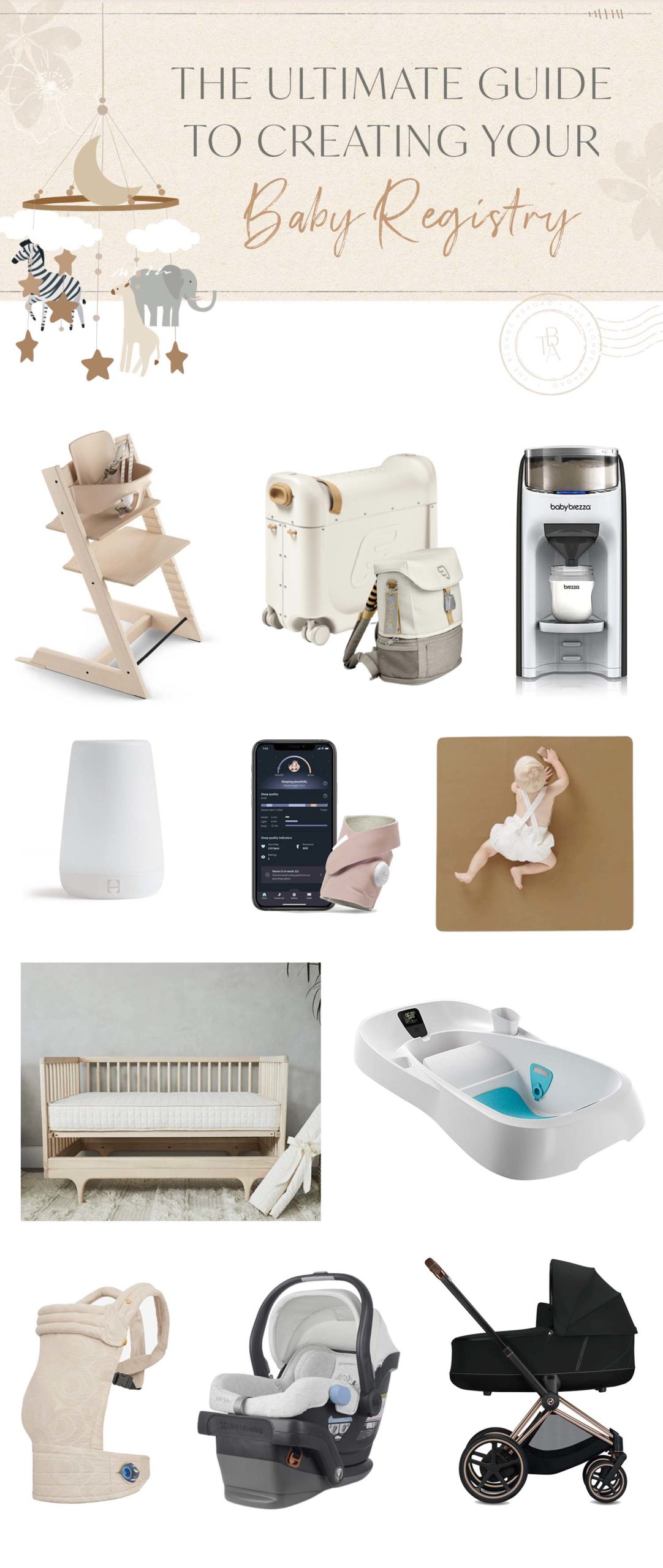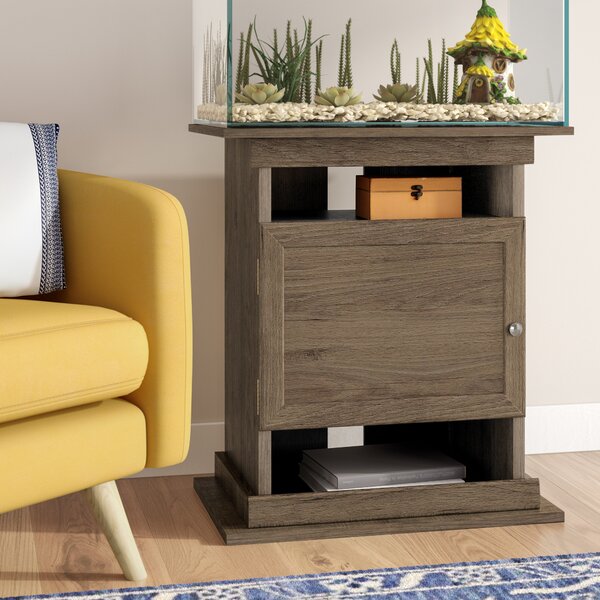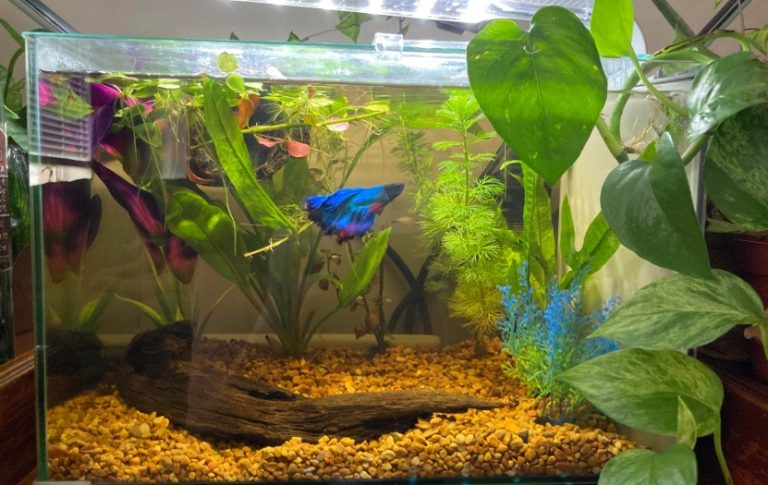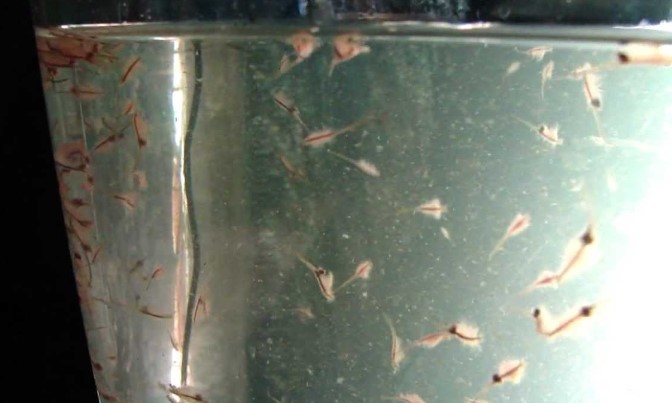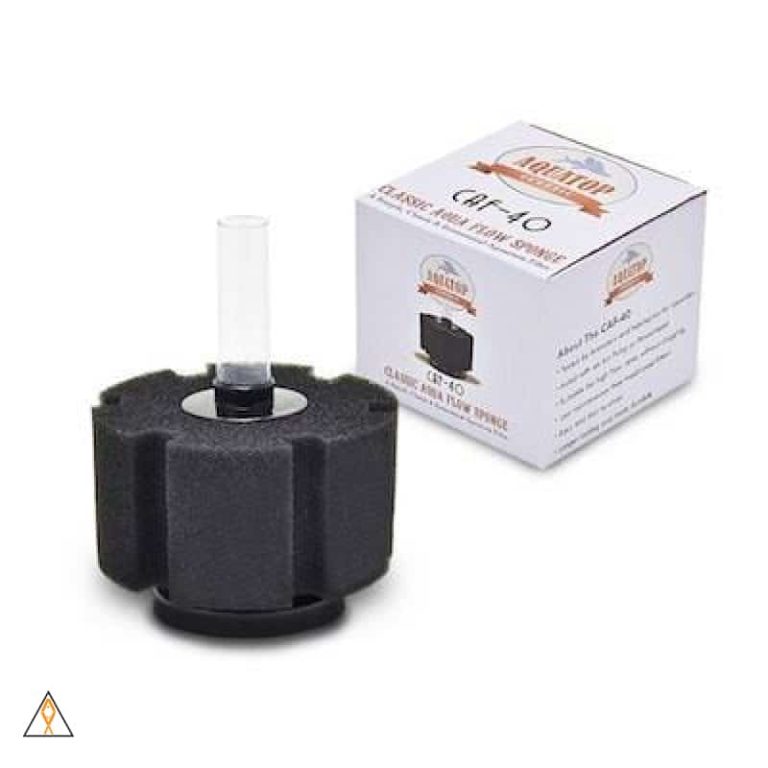Ultimate Guide: Unveiling the Effectiveness of UV Sterilizers in Saltwater Aquariums
Uv sterilizers can be beneficial for saltwater aquariums, as they help to eliminate harmful bacteria and parasites. Keeping a saltwater aquarium clean and free from harmful bacteria and parasites is essential for the health of the fish and other marine life.
One effective way to achieve this is by using uv sterilizers. Uv sterilizers use ultraviolet light to destroy microorganisms, including bacteria, viruses, and parasites, preventing their growth and reproduction. This can help maintain water quality and reduce the risk of diseases spreading within the aquarium.
Additionally, uv sterilizers can be used as a preventive measure to control algae growth, keeping the water clear and the aquarium aesthetically pleasing. By incorporating a uv sterilizer into your saltwater aquarium setup, you can create a safer and healthier environment for your marine creatures.
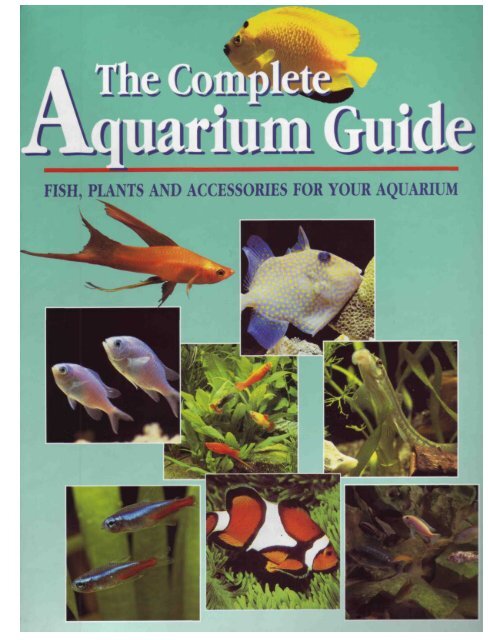
Credit: www.yumpu.com
Understanding Uv Sterilizers
Uv sterilizers are an essential tool for saltwater aquarium enthusiasts. These devices use uv-c light to kill microorganisms that can harm the health of your marine creatures. Understanding how uv sterilizers work in saltwater aquariums is crucial in maintaining water clarity and reducing the risk of diseases.
Let’s delve into the key points to help you grasp the benefits of using uv sterilizers.
How Uv Sterilizers Work In Saltwater Aquariums:
- Uv sterilizers are typically installed in-line with a pump or filter system.
- The water in the aquarium passes through the sterilizer, where it is exposed to uv-c light.
- The high-energy light rays emitted by the sterilizer break down the genetic material of microorganisms, such as bacteria, viruses, and parasites.
- This process effectively kills these harmful microorganisms and prevents them from reproducing.
- Uv sterilizers are most effective when the water flow is slowed down, ensuring sufficient contact time between the water and the uv-c light.
The Role Of Uv-C Light In Killing Microorganisms:
- Uv-c light is a short wavelength of ultraviolet light known for its germicidal properties.
- When microorganisms are exposed to uv-c light, it disrupts their dna, preventing them from replicating and causing harm.
- This degradation of genetic material renders the microorganisms unable to infect and reproduce.
- Uv-c light can effectively kill a wide range of pathogens, including algae, bacteria, viruses, and protozoa.
- By eliminating these microorganisms, uv sterilizers contribute to a healthier, more balanced aquatic environment.
Benefits Of Using Uv Sterilizers In Maintaining Water Clarity And Reducing Diseases:
- One of the significant benefits of uv sterilizers is their ability to improve water clarity. Uv-c light disrupts the cell structure of free-floating algae, causing them to clump together and making it easier for mechanical filters to remove them.
- By reducing the level of algae in the water, uv sterilizers help prevent the formation of unsightly green water and enhance the overall aesthetic appeal of the aquarium.
- Uv sterilizers also play a crucial role in disease prevention. They neutralize and eliminate harmful pathogens that can cause infections and diseases in your saltwater aquarium inhabitants.
- With fewer disease-causing microorganisms in the water, the risk of outbreaks and subsequent loss of marine life is significantly reduced.
- Uv sterilizers can be particularly beneficial in reef aquariums, where delicate coral species are vulnerable to infections. By maintaining pristine water conditions, uv sterilizers support coral health and growth.
Uv sterilizers are a valuable tool for saltwater aquarium owners, offering a range of benefits. By understanding how these devices work and the role of uv-c light, you can maintain a healthy and visually appealing aquatic environment. The use of uv sterilizers in saltwater aquariums promotes water clarity, reduces diseases, and safeguards the well-being of your marine creatures.
Selecting The Right Uv Sterilizer
Uv sterilizers can be a valuable addition to a saltwater aquarium, as they help control harmful microorganisms and keep the water clean and clear. However, selecting the right uv sterilizer is crucial to ensure that it works effectively with your specific aquarium setup.
There are several key factors to consider when choosing a uv sterilizer for your saltwater aquarium.
Factors To Consider When Choosing A Uv Sterilizer For A Saltwater Aquarium:
- Flow rate and capacity: The flow rate of the uv sterilizer should match the water circulation in your aquarium. Ensure that the sterilizer has the capacity to handle the volume of water effectively.
- Size of the aquarium: Consider the size of your aquarium when choosing a uv sterilizer. Larger aquariums may require a more powerful sterilizer or multiple units to cover the entire volume of water.
- Type of organisms to be controlled: Different uv sterilizers may be more effective at controlling specific types of organisms. Determine the main culprits in your aquarium, such as algae or parasites, and select a sterilizer that targets those organisms.
- Sterilizer installation options: There are various installation options for uv sterilizers, including hang-on models, in-line models, or submersible models. Consider the available space and the ease of installation when making your decision.
Finding the right uv sterilizer for your saltwater aquarium can greatly improve the water quality and overall health of your tank. By considering factors such as flow rate, aquarium size, targeted organisms, and installation options, you can make an informed choice that will benefit your aquatic environment.
Take the time to research and select a uv sterilizer that suits your specific needs, and enjoy a clean and vibrant saltwater aquarium.
Installing And Operating Uv Sterilizers
Step-By-Step Guide To Installing A Uv Sterilizer In A Saltwater Aquarium
Installing a uv sterilizer in your saltwater aquarium can greatly benefit the health and clarity of your tank. Follow these simple steps to ensure a successful installation:
- Determine the optimal location: Place the uv sterilizer in a position where water flow is highest and can easily pass through the unit. Avoid placing it near heaters or other equipment that may obstruct the flow.
- Prep the plumbing: Shut off all power sources and drain enough water from the aquarium to safely work on the plumbing. Install the sterilizer into the plumbing system, typically between the return pump and the protein skimmer.
- Connect the sterilizer: Attach the sterilizer inlet to the outlet of the return pump, and connect the sterilizer outlet to the protein skimmer’s inlet. Double-check all connections to ensure a secure fit.
- Power up: Once the connections are secure, plug in the uv sterilizer and turn on the power source. Give it a few minutes to start working properly.
- Monitor the flow rate: Check the flow rate of water passing through the sterilizer. Follow the manufacturer’s guidelines to ensure the optimal flow rate for effective sterilization.
Tips For Proper Setup And Positioning To Maximize Effectiveness
To get the most out of your uv sterilizer, consider the following tips during setup and positioning:
- Orient the sterilizer correctly: Some uv sterilizers feature an arrow indicating the flow direction. Make sure the arrow aligns with the flow direction of your aquarium’s water system.
- Position for maximum contact time: Place the uv sterilizer where the water will have the longest contact time with the uv radiation. This typically means positioning it horizontally or slightly inclined.
- Keep it away from obstructions: Avoid placing the sterilizer near objects or decorations that may cast shadows, obstructing the uv radiation. Keep the area surrounding the sterilizer clear.
- Regularly monitor effectiveness: Observe the water clarity and the health of the tank inhabitants to assess the sterilizer’s effectiveness. Make adjustments to the positioning or flow rate if necessary.
Understanding The Maintenance Requirements And Cleaning Procedures
Maintaining and cleaning your uv sterilizer is crucial in ensuring its long-term effectiveness. Follow these maintenance procedures to keep it functioning optimally:
- Regularly inspect the quartz sleeve: Check the quartz sleeve for any algae, debris, or mineral deposits. Clean it with a soft brush or sponge using a vinegar solution or a recommended cleaner.
- Replace the uv bulb: Uv bulbs lose their effectiveness over time, usually within 6 to 12 months. Replace the bulb according to the manufacturer’s instructions to maintain efficient sterilization.
- Clean the exterior: Wipe down the exterior of the sterilizer regularly to remove dust, salt creep, or other accumulated debris. Avoid using abrasive cleaners that may damage the unit.
- Check the seals: Inspect the o-rings and seals for any signs of wear or deterioration. Replace them as needed to prevent leaks and ensure proper functioning.
By following these installation, setup, and maintenance guidelines, you can maximize the effectiveness of your uv sterilizer in your saltwater aquarium. Enjoy the benefits of a cleaner and healthier tank for your marine inhabitants.
Optimizing The Effectiveness Of Uv Sterilizers
Uv sterilizers can be a valuable addition to your saltwater aquarium, helping to keep the water clear and free from harmful bacteria and algae. However, to ensure that your uv sterilizer is working at its full potential, there are a few key considerations to keep in mind.
By supplementing uv sterilizers with other filtration methods, maintaining proper water parameters, and incorporating them into a comprehensive aquarium maintenance routine, you can maximize their effectiveness. Here are some tips to optimize the performance of your uv sterilizers:
Supplementing Uv Sterilizers With Other Filtration Methods:
- Use a combination of mechanical, chemical, and biological filtration in conjunction with your uv sterilizer for comprehensive water purification.
- Mechanical filtration, such as using a sponge or filter media to trap debris, can help remove larger particles before the water reaches the uv sterilizer.
- Chemical filtration, such as activated carbon or phosphate removers, can effectively remove impurities that may not be targeted by uv sterilizers.
- Biological filtration, provided by live rock or a biological filter, helps to establish beneficial bacteria that aid in the breakdown of organic waste.
Maintaining Proper Water Parameters For Optimal Operation:
- Ensure that the flow rate through the uv sterilizer matches the manufacturer’s recommendations. A slower flow rate allows for longer exposure to the uv light.
- Regularly clean the quartz sleeve and uv bulb to prevent any buildup that may hinder the effectiveness of the sterilizer.
- Monitor the water temperature and ph levels to ensure they stay within the appropriate range for the sterilizer to work efficiently.
- Regularly test and adjust ammonia, nitrate, and nitrite levels to maintain a healthy environment for both fish and invertebrates.
Using Uv Sterilizers As Part Of A Comprehensive Aquarium Maintenance Routine:
- Incorporate regular water changes into your aquarium maintenance routine to remove excess nutrients that can contribute to algae growth.
- Clean or replace filter media regularly to prevent clogging and maintain optimal water flow.
- Install a timer for the uv sterilizer to ensure it runs for the recommended duration without interruptions.
- Keep track of the uv sterilizer’s lifespan and replace the uv bulb as needed to maintain its effectiveness.
By following these tips and incorporating uv sterilizers into a well-rounded aquarium maintenance routine, you can ensure that your saltwater aquarium remains clean, clear, and free from harmful microorganisms. Remember to regularly monitor water parameters, supplement the sterilizer with other filtration methods, and provide consistent care for the best results.
Potential Drawbacks And Limitations
Are Uv Sterilizers Good For Saltwater Aquariums?
Common challenges and limitations in using uv sterilizers:
- Uv sterilizers can be expensive to purchase and maintain, adding to the overall cost of setting up and maintaining a saltwater aquarium.
- They require additional space in the aquarium setup, which may be a limitation for those with limited space or smaller tank sizes.
- Uv sterilizers are not all-in-one solutions and should be used in conjunction with other filtration methods to ensure a clean and healthy environment for the fish and other aquatic life.
Identifying potential negative effects on beneficial microorganisms:
- While uv sterilizers are effective in eliminating harmful pathogens and algae, they can also kill beneficial microorganisms in the water. These microorganisms play an essential role in maintaining the overall balance and health of the aquarium’s ecosystem.
- The use of uv sterilizers can disrupt the biological filtration process, leading to an imbalance in ammonia and nitrate levels. This can potentially harm the fish and other inhabitants of the aquarium.
Understanding the need for appropriate uv dosage and exposure time:
- Uv sterilizers operate based on a specific dosage and exposure time, which needs to be set according to the particular needs of the aquarium. Failure to establish the appropriate uv dosage and exposure time may render the sterilizer ineffective or result in the unnecessary killing of beneficial organisms.
- It is crucial to strike a balance between achieving a clean and pathogen-free environment and preserving the health of the beneficial microorganisms in the aquarium ecosystem.
While uv sterilizers can be beneficial in controlling pathogens and algae, their usage in saltwater aquariums comes with certain limitations and potential drawbacks. Understanding and addressing these challenges, such as the cost implications, impact on beneficial microorganisms, and ensuring appropriate uv dosage and exposure time, is essential for maintaining a healthy and thriving saltwater aquarium.
Best Practices And Tips For Uv Sterilizer Use
Are Uv Sterilizers Good For Saltwater Aquariums?
Uv sterilizers are a popular choice for saltwater aquarium enthusiasts looking to maintain optimal water conditions and keep their aquatic life healthy. These devices use ultraviolet light to kill harmful bacteria, viruses, and parasites, preventing their spread within the aquarium.
However, to ensure the effectiveness of uv sterilizers, it is crucial to follow best practices and implement them correctly. In this section, we will explore key considerations, optimal settings, and monitoring and troubleshooting tips to maximize the benefits of uv sterilizer use in saltwater aquariums.
Key Considerations For Successful Implementation:
- Positioning: Place the uv sterilizer unit after the mechanical and biological filtration stages to ensure maximum water clarity and efficiency.
- Wattage: Select a uv sterilizer with appropriate wattage according to the size of your aquarium. A general guideline is 1 watt per 2 gallons of water.
- Flow rate: Ensure that the flow rate through the uv sterilizer matches the recommended flow rate specified by the manufacturer for effective sterilization.
- Replacement bulbs: Regularly replace the uv sterilizer bulbs at the recommended intervals to maintain optimal performance. Over time, the effectiveness of the bulbs diminishes, reducing sterilization capabilities.
- Pre-filtering: Use a pre-filter to remove larger debris and particles before they enter the uv sterilizer. This helps prevent clogging and prolongs the lifespan of the uv bulb.
Optimal Settings And Adjustments For Different Aquarium Setups:
- Contact time: Adjust the flow rate and contact time of water within the uv sterilizer to ensure sufficient exposure to the uv light for effective sterilization. Lower flow rates typically result in longer contact times, enhancing effectiveness.
- Transmittance: Regularly clean the quartz sleeve and other components of the uv sterilizer to maintain optimal light transmittance. Any buildup of algae or mineral deposits can reduce the efficiency of the uv light.
- Light intensity: Monitor the uv sterilizer’s light intensity using a light meter to ensure it falls within the manufacturer’s recommended range. Adjust the distance between the bulb and the water column if necessary.
Monitoring And Troubleshooting Tips To Ensure Consistent Performance:
- Regular maintenance: Clean the uv sterilizer and associated equipment, such as the pre-filter and water pump, on a regular basis. This prevents any blockages or buildup that may hinder the sterilizer’s performance.
- Water quality testing: Continually monitor water parameters such as ammonia, nitrite, and nitrate levels to assess the effectiveness of the uv sterilizer. A well-maintained sterilizer should contribute to the overall water quality in the aquarium.
- Bulb replacement: Replace the uv sterilizer bulb if it fails to emit the characteristic blue-violet glow. A dim or non-functional bulb will not provide the necessary uv light to sterilize the water effectively.
- Troubleshooting: If experiencing issues with the uv sterilizer, check the power supply, connections, and flow rate. Ensure that all components are functioning correctly and consult the manufacturer’s manual or seek assistance if necessary.
By following these best practices and tips, you can optimize the use of uv sterilizers in saltwater aquariums, maintaining a clean and healthy environment for your marine life. Remember to regularly monitor and maintain the uv sterilizer to ensure consistent performance and protect your precious aquatic inhabitants.
Frequently Asked Questions On Are Uv Sterilizers Good For Saltwater Aquariums
Are Uv Sterilizers Effective For Saltwater Aquariums?
Uv sterilizers can be highly effective in saltwater aquariums as they help eliminate harmful bacteria and parasites, ensuring a healthy environment for marine life.
How Do Uv Sterilizers Work In Saltwater Aquariums?
Uv sterilizers use ultraviolet light to kill or inhibit the growth of microorganisms, preventing diseases in saltwater aquariums.
Do Uv Sterilizers Harm Beneficial Bacteria In Saltwater Aquariums?
While uv sterilizers can eliminate some beneficial bacteria in the water, they do not significantly impact the biological filtration system of a properly maintained saltwater aquarium.
Can Uv Sterilizers Be Used As The Sole Method Of Filtration In Saltwater Aquariums?
Uv sterilizers are not designed to replace traditional filtration methods, but rather to enhance them. They work best when used in conjunction with other forms of filtration to maintain optimal water quality in a saltwater aquarium.
Conclusion
To sum up, uv sterilizers can be a valuable addition to your saltwater aquarium by providing an effective method to control harmful bacteria, viruses, and parasites. By eliminating these pathogens, uv sterilizers help maintain water clarity and improve the overall health of your aquatic pets.
Remember to choose the correct size and wattage for your specific tank needs, ensuring that the sterilizer efficiently treats the volume of water. Regular maintenance, such as cleaning the quartz sleeve and replacing the uv bulb, is essential to ensure optimal performance.
While uv sterilizers are not a substitute for proper aquarium husbandry and tank maintenance, they can significantly enhance the water quality and create a healthier living environment for your prized marine inhabitants. Consider investing in a uv sterilizer to enjoy a cleaner and safer saltwater aquarium that flourishes with vibrant and happy marine life.
